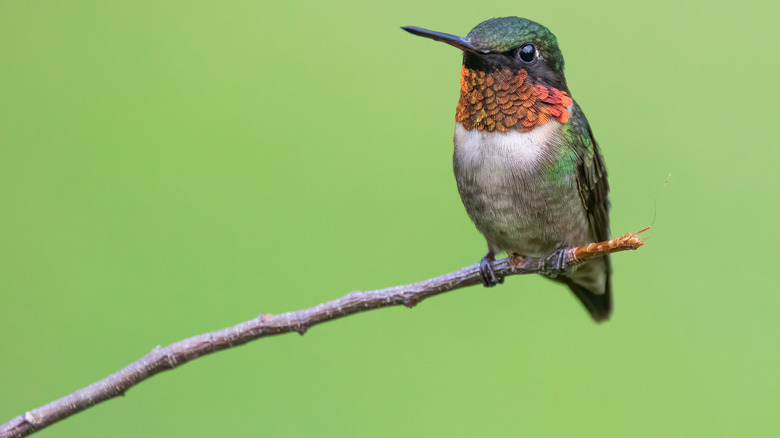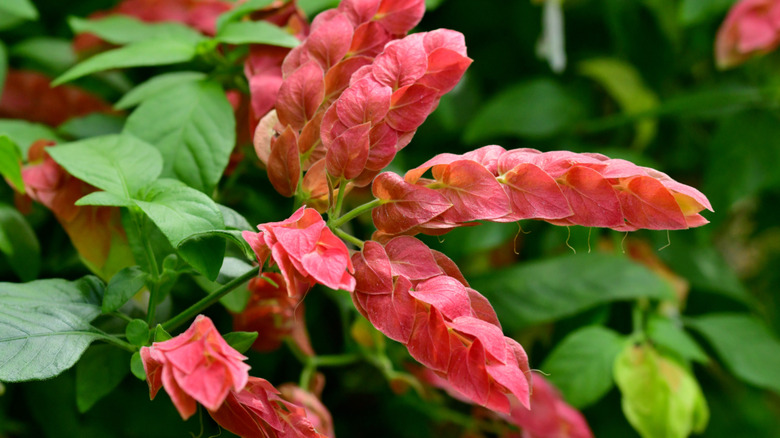Attract Hummingbirds To Your Yard With This Tropical Plant
Want to see a flurry of hummingbirds in your yard this year? Adding the right plants, such as the shrimp plant (Justicia brandegeana), a favorite of hummers, is key. A proven method to attract hummingbirds to your garden is by growing tubular flowers in shades of red or pink, and the shrimp plant fits the bill. The shape of the tropical perennial's leaf-like structures, called bracts, resembles its crustacean namesake, the common shrimp. Thanks to the tube-like bracts, the birds can dip their beaks inside and sip the sweet nectar waiting within the encased white flowers. When purchasing this plant, avoid mistaking it with a species of a similar name and shape, the golden shrimp plant, as it doesn't feature the red or pink colors that hummers prefer.
Spring is an ideal time to plant a shrimp plant to lure hummers to your yard, but certain species can be found year-round in some regions. Others migrate to warmer destinations for the winter and then return in the spring. Depending on your area, many hummingbirds begin appearing in March and linger until at least May. If you'd like to see these jewel-colored creatures near your home this year, here's how to plant and care for a proven hummingbird magnet: the shrimp plant.
How to grow shrimp plants to attract hummingbirds
The shrimp plant is a moderate-growing plant that does well in areas that are USDA Zones 9 to 11. Originating from Mexico, it can thrive as an evergreen in locations such as Florida and similar areas characterized by warm climates. Here, the flower experiences a bloom cycle that begins in early spring and continues through the winter. A hardy perennial within this region, its flowers typically die during winter's frost or freeze, before growing back in the spring. If you reside within zones 9 to 11, you may begin planting in the early spring after the last frost, then continue planting until midsummer. Shrimp plants grow in clumps, requiring only minor pruning to keep their attractive shape.
These plants prefer moist, well-drained soil, with a slightly acidic to alkaline pH. Give them plenty of space, as they can spread 3 to 4 feet as they grow (they prefer not to compete with other plants). Provide shrimp plants with plenty of light, as they require full sun to partial shade, but watch carefully for any bleaching of the bracts. Water so the soil is moist, but not soggy or waterlogged, and only when the top layer is dry. With this love and care, the plant can eventually grow to a height of 2 to 6 feet tall, though 2 to 4 feet is more realistic for some areas. Regardless of its height, it will be a showy tropical plant that will attract hummingbirds and butterflies to your yard. Shrimp plants are typically disease-resistant, though they might develop leaf spot, as well as pests such as spider mites or aphids. Whether used as an attractive garden border or groundcover, it will make a dazzling impression on your guests and pollinators alike.

